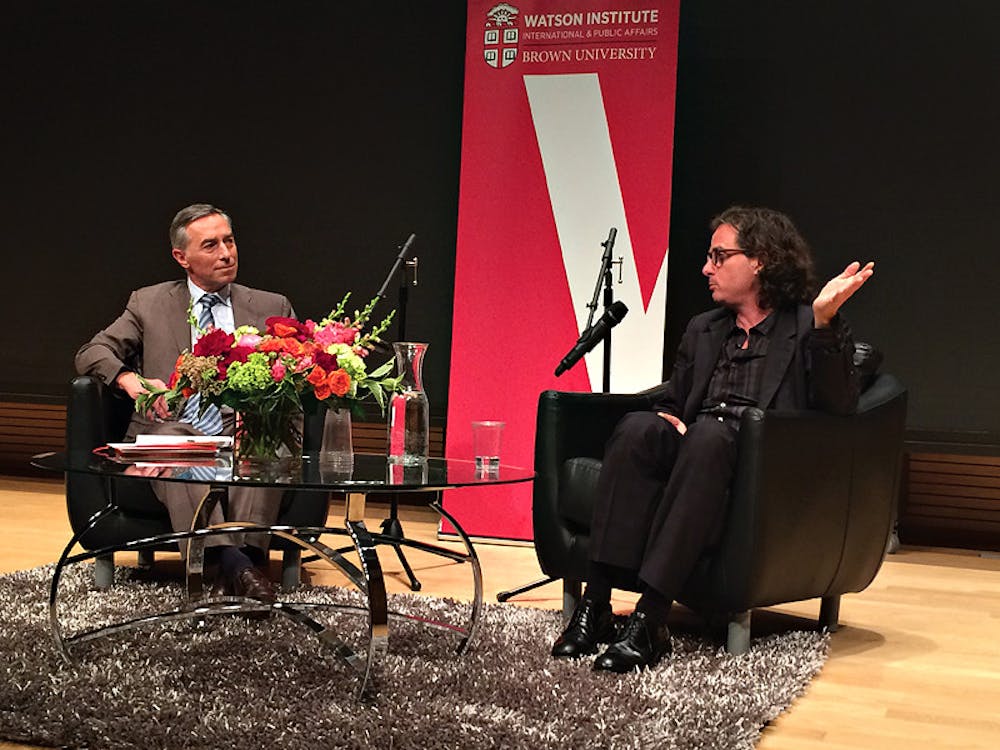“It is better to live like a lion for one day than to live like a slave for 1,000 years,” Malala Yousafzai says over the beautiful opening sequence of, “He Named Me Malala.” The quote comes from Malalai, her namesake and a girl who led Afghani forces over the British Empire in 1880. This name bestows upon Malala the dual identity of “grief-stricken” and “brave.”
“He Named Me Malala” explores the mission of Malala Yousafzai, who won the Nobel Peace Prize at 17 for her work advocating women’s education in her native Pakistan and abroad, despite an assassination attempt from the Taliban that left her without feeling in the left side of her face.
“I like when it’s not just a movie, it’s a movement,” Academy Award-winning documentarian Davis Guggenheim ’86 told The Herald before the screening, discussing the call-to-action present in his latest creation. He is known for his socially poignant films, including “An Inconvenient Truth” and “Waiting for Superman.”
Guggenheim’s storytelling and Malala’s remarkable humility collide in a documentary that is as surprising as it is poetic, as down-to-Earth one minute as it is Earth-shattering the next. Guggenheim did not make a film about Malala. He made a film about why everyone needs to see a film about Malala.
“If you think about Malala, people know she was the girl shot on a school bus,” Guggenheim said. “You have the additional responsibility of helping audiences rethink who this person is.”
The film never shies away from the attack on Malala, bringing it up at the start and then throughout in flashbacks that show a man walking up to a school bus, bright lights in a hospital room and a firing gun. At one point Malala even draws a layout of her location on the bus for the camera.
But for much of the film, the portrayal of this incident lacks the heart-wrenching impact one expects, instead acknowledging it in much the same way Malala must now live with it daily.
“I chose not to do a broad geopolitical story,” Guggeinheim said. “I thought if I could tell a simple father-daughter story, the themes in the movie would be more universal.”
The documentary follows Malala in England after the attack. Malala’s humanity and her relationship with her father, Zia, are explored on screen.
A playful side of Malala appears in the film as she teases and jokes with her two brothers, tries to explain Twitter to her father and looks at pictures of cricket players and Brad Pitt. She tells the camera that she is not sure what her family would think if she asked out a boy. Her father is ever-present, standing proudly as she gives speeches to dignitaries or meets celebrities, who Malala guesses have less homework than she does.
These perceptions could feel forced or stereotyped, but the verite-style clips are juxtaposed with a nuanced look at the past. “Over time my style has become more narrative-based, and mixing documentary tools and narrative tools,” Guggenheim said. “At times it feels just like a movie.”
Animation plays a crucial role in the film. Malala’s father voices over anecdotes from his life accompanied by haunting visuals in dark, resigned hues. An animated sequence about his childhood speech impediment visually lights the fire within him as he overcomes it in front of his peers, depicted as white flames bursting out of his mouth and forming Arabic words. Malala has a nightmare sequence rendered in dark black shadows and muddled greens, topping off the exquisitely beautiful animation in a film that would seemingly have no right to it.
“I actually get very worried when I feel too comfortable,” Guggenheim said. “Because then the directing and storytelling will feel routine, and they won’t have life to it. I like to throw myself into impossible process, and in the process of working my way out of, I discover things.”
“He Named Me Malala” provided this narrative challenge. Malala’s story is not told chronologically, and the film lacks a clear villain — at one point, Zia says that an “ideology,” not a person, shot his daughter.
Without this structural urgency in the plot, Guggenheim is able to linger on each shot, choosing minimalism and montage to depict a woman steeped in humility. As the personal encounters begin to add up over the course of the film, her achievements begin to feel more and more visceral. “It is hard to get things done in this world,” Malala says.
And then it hits. The film cuts to a real-life photo of the bloody interior of the bus in which Malala was shot. Emotions peak, because the film no longer feels like one about a Nobel Peace Prize winner. It’s a film about an ordinary girl who wanted an education and was shot for it. It’s a film about Guggenheim’s daughters who “still feel too shy to speak out, not confident enough to stand up to sometimes their brother, sometimes the world.”
In many ways, the climax of Malala’s story is not the violent moment on the school bus, but at the moment she decides to speak out and fight for girls’ education, a choice she made knowing that the Taliban may target her. “My father only gave me the name Malala. I became Malala,” she states.
“We’re aligned with Malala’s mission,” Guggenheim said about what he hopes the audience takes away from the documentary. “Her focus is on the 66 million girls who are out of school.”
Through a peeling-back of myth-making, “He Named Me Malala” becomes a story about the basic human urge for equality and the intensity with which it burns in everyone. Not even Malala’s father, her strongest support in life, could give that to her.

ADVERTISEMENT




